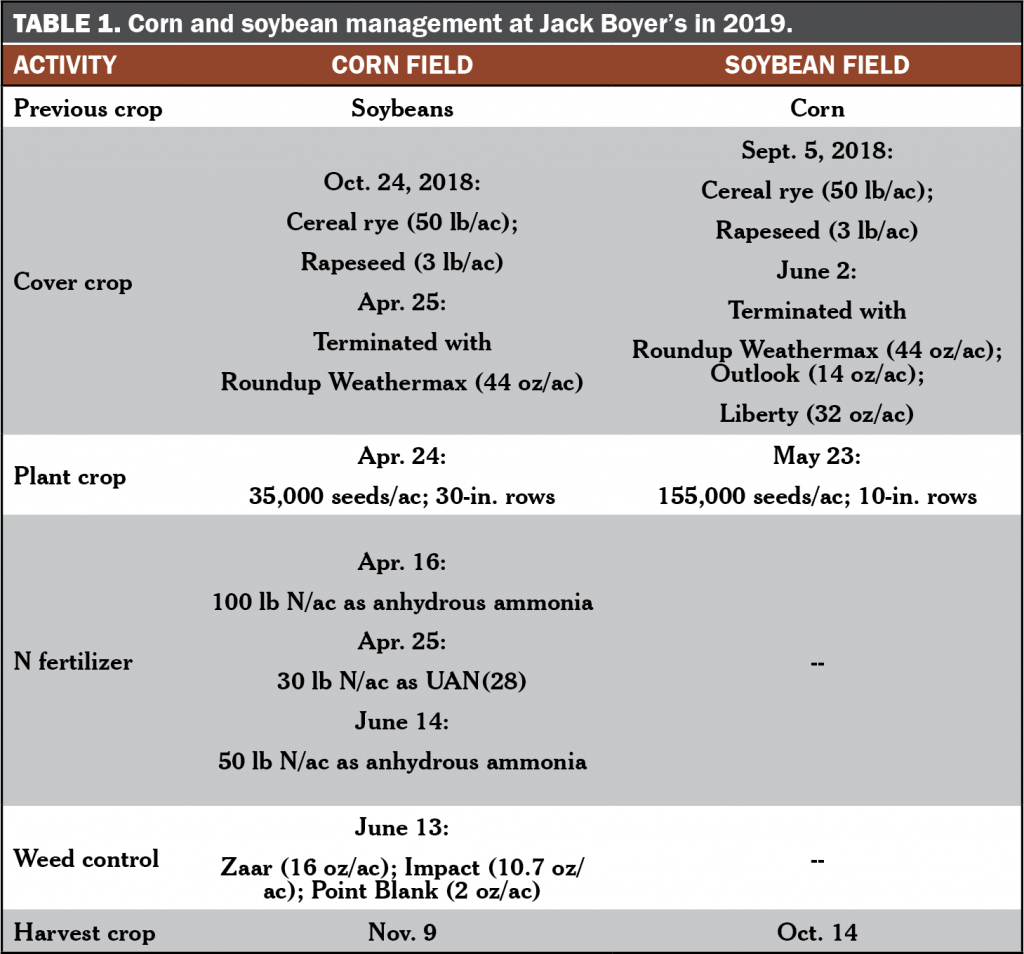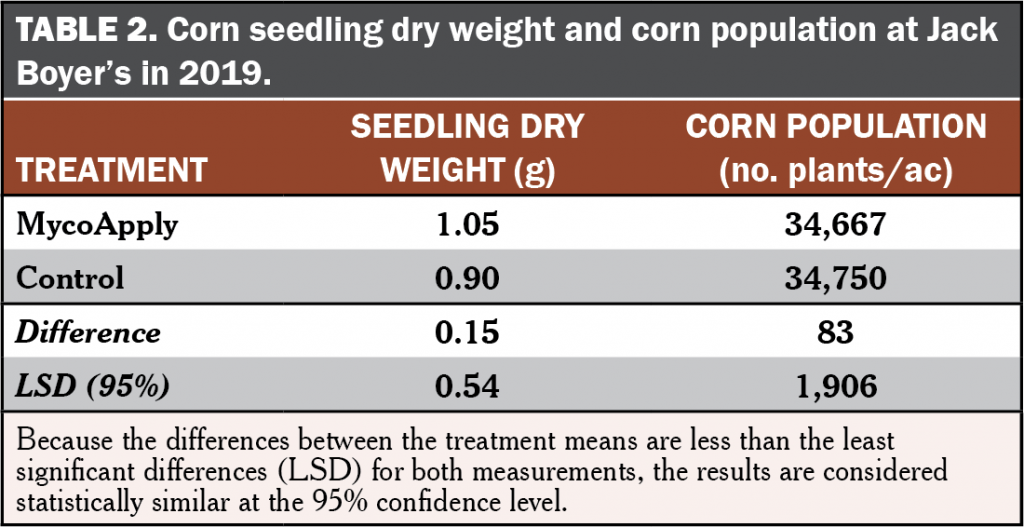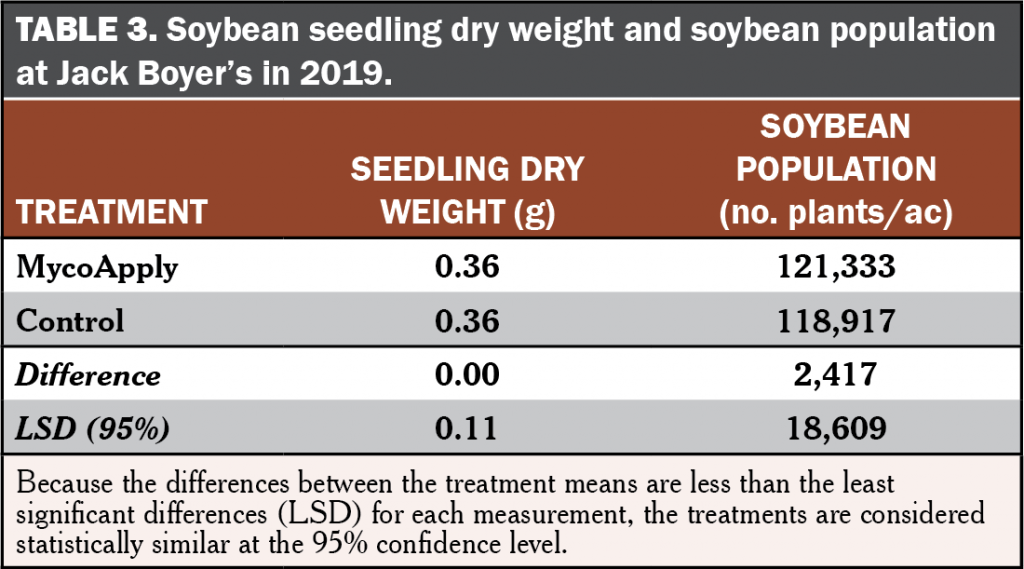This project was funded by the Walton Family Foundation
In a Nutshell:
- Numerous products are marketed to farmers that promise to boost crop yields. Jack Boyer was curious about one such product – MycoApply – and tested the effectiveness of this mycorrhizal soil inoculant on corn and soybeans.
- Boyer hypothesized that the MycoApply would improve corn and soybean yields and that the yield improvement would be more than enough to pay for the cost of the product.
Key Findings:
- MycoApply had no effect on corn or soybean yields compared to the control treatment, which did not receive the product.
- Applying this soil inoculant product only added to Boyer’s crop production costs.
Methods
Design
Boyer conducted trials in separate corn and soybean fields (Table 1).
To test the effectiveness of MycoApply, Boyer compared two treatments in both the corn and soybean field:
- MycoApply;
- No-MycoApply (control).
Boyer implemented four replications of the two treatments in both fields (Figure A1). Strips measured 30 ft wide by 1,400 ft long in the corn field and 30 ft wide by 2,430 ft long in the soybean field. Boyer applied the MycoApply at a rate of 2 lb/ac in the furrow at the time of corn planting (Apr. 24) and soybean planting (May 23). He reported the cost of the product as $12.50/ac.
Measurements
In mid-June, we conducted stand counts and collected five whole-plant seedling samples from each strip in both the corn and soybean field. We weighed the whole-plant corn and soybean seedlings after allowing them to air-dry for three weeks. Boyer harvested and recorded yields from each individual strip in the corn field on Nov. 9 and in the soybean field on Oct. 14.
Data analysis
To evaluate any effects, we calculated the least significant difference (LSD) between the MycoApply and control treatments at the 95% confidence level using a t-test for each measurement: seedling weight, plant population and crop yield. For each measurement, if the difference resulting from the two treatments was greater than the calculated LSD, we would expect such a difference to occur 95 times out of 100 – we refer to this as a statistically significant effect. On the other hand, if the difference resulting from the two treatments was less than the LSD, we consider the results to be statistically similar. We could make these statistical calculations because Boyer’s experimental design involved replication of the two treatment. (Figure A1).
Results and Discussion
Corn
The MycoApply had no effect on corn seedling weight and corn population (Table 2); nor did it have any effect on corn yield compared to the no-MycoApply control treatment (Figure 1). Across the two treatments, Boyer’s mean corn yield was 248 bu/ac which exceeded the five-year Tama County average of 205 bu/ac.[1]
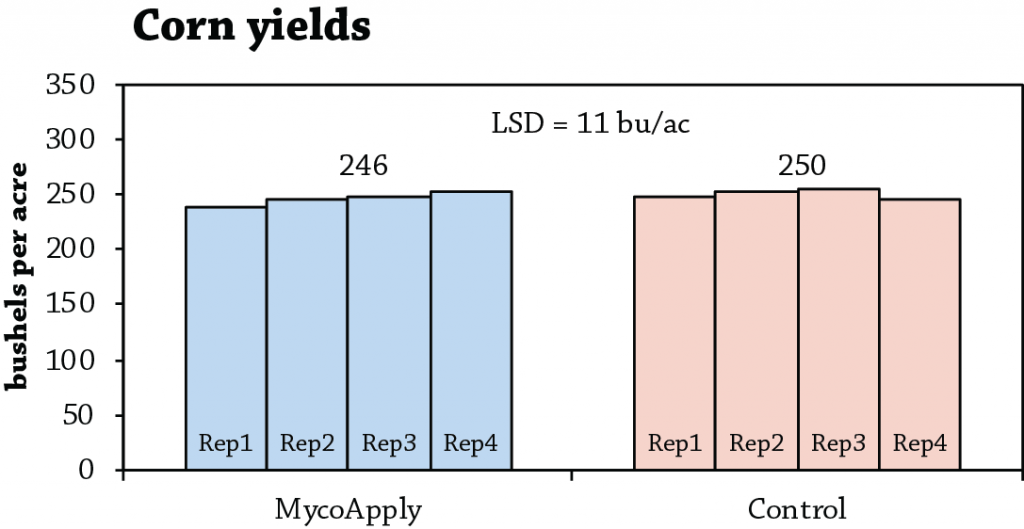
FIGURE 1. Corn yields at Jack Boyer’s, harvested on Nov. 9, 2019. Columns represent yields for each individual strip. Above each set of columns is the mean for both treatments. Because the difference between the two means (4 bu/ac) is less than the least significant difference (LSD; 11 bu/ac), the results are considered statistically similar at the 95% confidence level.
Soybeans
The MycoApply had no effect on soybean seedling weight and soybean population (Table 3); nor did it have any effect on soybean yield compared to the no-MycoApply control treatment (Figure 2). Across the two treatments, Boyer’s mean soybean yield was 61 bu/ac which was just above the five-year Tama County average of 59 bu/ac.[1]

FIGURE 2. Soybean yields at Jack Boyer’s, harvested on Oct. 14, 2019. Columns represent yields for each individual strip. Above each set of columns is the mean for both treatments. Because the difference between the two means (2 bu/ac) is less than the least significant difference (LSD; 14 bu/ac), the results are considered statistically similar at the 95% confidence level.
Conclusions and Next Steps
Because the MycoApply soil inoculant had no effect on corn or soybean yields compared to the control, the product is considered an added expense to Boyer’s crop production. In both fields, the added expense amounted to $12.50/ac. “I learned that this product [MycoApply] does not pay on my farm because I did not see a return on investment,” Boyer said.
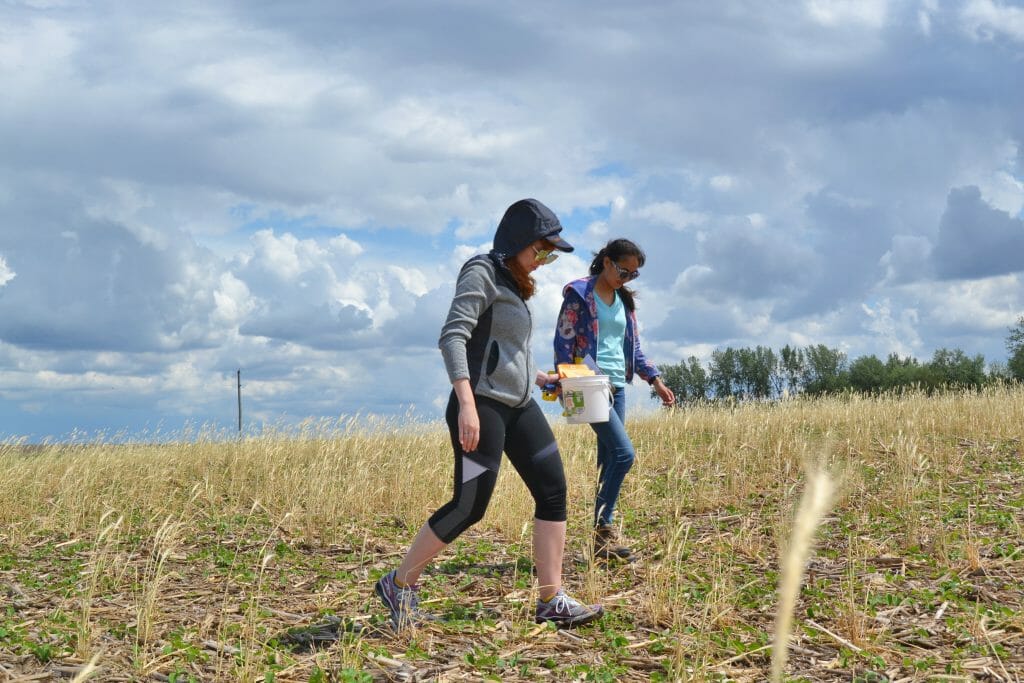
AmeriCorps volunteers Taylor Hintch (left) and Grace Yi helped collect corn and soybean seedling samples on June 12, 2019 at Jack Boyer’s farm.
Appendix – Trial Design and Weather Conditions

FIGURE A1. Jack Boyer’s experimental design. In both the corn and soybean field, he implemented four replications of the two treatments (eight strips total). This design allows for statistical analysis of the results.
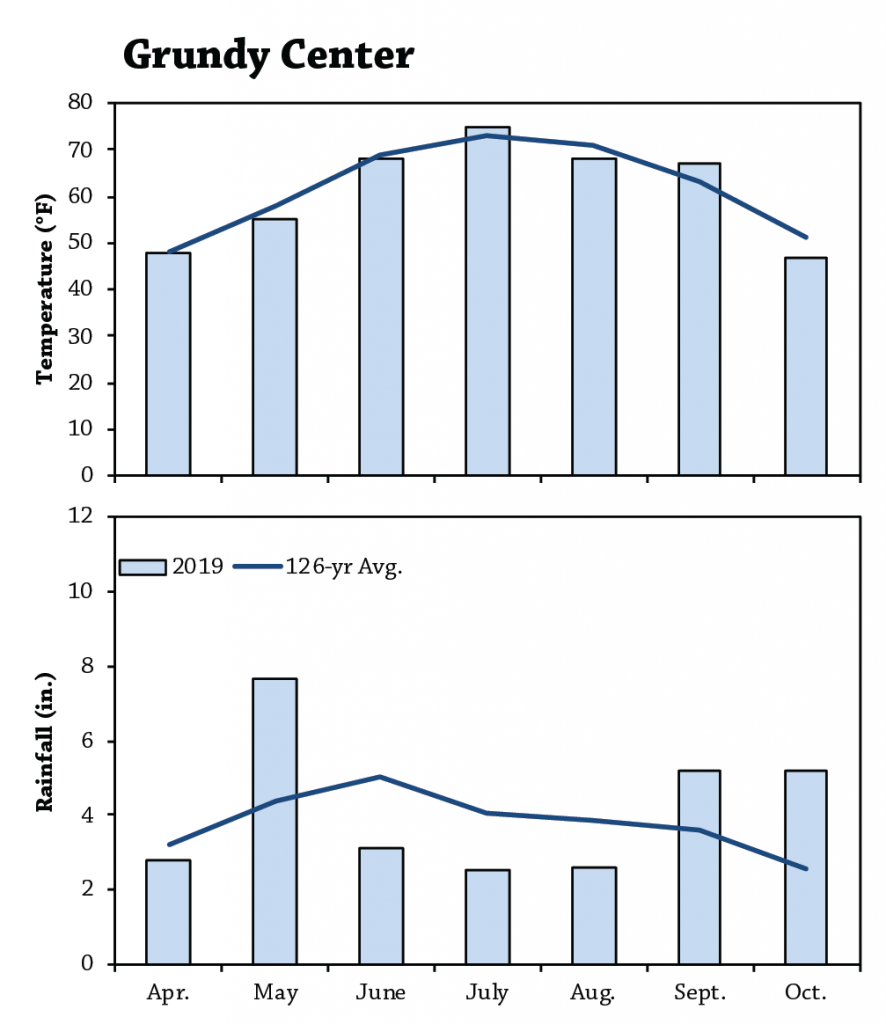
FIGURE A2. Mean monthly temperature and rainfall for Apr. 1, 2019 through Oct. 31, 2019 and the long-term averages at Grundy Center, the nearest weather station to Boyer’s farm (about 9 miles away).[2]
References
- US Department of Agriculture-National Agricultural Statistics Service. Quick stats. USDA-National Agricultural Statistics Service. https://quickstats.nass.usda.gov/ (accessed November 2019).
- Iowa Environmental Mesonet. 2019. Climodat Reports. Iowa State University. http://mesonet.agron.iastate.edu/climodat/ (accessed November 2019).


